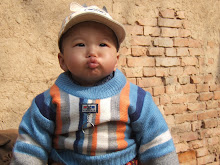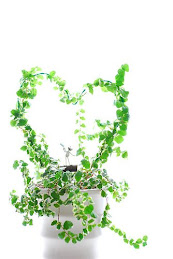
Chinese Mid-Autumn Festival is coming, Chinese will have a amused festival.The Mid-Autumn Festival is one of the most important festivities in China, According to Chinese lunar calendar, the 15th day of the 8th month is the exact midst of autumn, so it's called the Mid-Autumn Festival. The Mid-Autumn Festival is an evening celebration when families gather together to light lanterns, eat moon cakes and appreciate the round moon. On that night, the moon appears to be at its roundest and brightest. The full moon is a symbol for family reunion, which is why that day is also known as the Festival of Reunion.
Celebration of the Mid-Autumn Festival
Also known as the "Full Moon Festival," the Mid-Autumn festival falls on the fifteen day of the eighth lunar month. At this time, the moon's orbit is at its lowest angle to the horizon, making the moon appear brighter and larger than any other time of the year. In the Western tradition, it is also called the Hunter's Moon or Harvest Moon. According to the lunar calendar, it is also the exact middle of autumn (which begins in the seventh month and ends in the ninth).
To the Chinese, this festival is similar to the American Thanksgiving holiday, celebrating a bountiful harvest. Compared to many Chinese festivals that are inundated with vibrant colors and sounds, the Mid-Autumn festival remains more subdued. Traditionally celebrated outdoors under the moonlight, people eat moon cakes and gaze at the moon. In modern times, barbecues with families and friends are also common.

Food of the Mid-Autumn Festival
The indispensability of Chinese food is the moon cake.There is this story about the moon-cake. during the Yuan dynasty (A.D. 1280-1368) China was ruled by the Mongolian people. Leaders from the preceding Sung dynasty (A.D. 960-1280) were unhappy at submitting to the foreign rule, and set how to coordinate the rebellion without being discovered. The leaders of the rebellion, knowing that the Moon Festival was drawing near, ordered the making of special cakes. Backed into each moon caked was a message with the outline of the attack. On the night of the Moon Festival, the rebels successfully attached and overthrew the government. Today, moon cakes are eaten to commemorate this legend and was called the Moon Cake.
For generations, moon cakes have been made with sweet fillings of nuts, mashed red beans, lotus-seed paste or Chinese dates, wrapped in a pastry. Sometimes a cooked egg yolk can be found in the middle of the rich tasting dessert. People compare moon cakes to the plum pudding and fruit cakes which are served in the English holiday seasons.
Nowadays, there are hundreds varieties of moon cakes on sale a month before the arrival of Moon Festival.
Legend of mid-autumn festival
Hou Yi ( 后羿) was a great archer and architect, who shot down nine extra suns that had suddenly appeared in the sky and thus kept the earth from being scorched. He also built a palace of jade for the Goddess of the Western Heaven. For this, he was rewarded with a pill containing the elixir of immortality, but with strings attached--he must fast and pray for a year before taking it. His wife, Chang O ( 惯甖), whose beauty was surpassed only by her curiosity, discovered and swallowed the pill and in no time soared to the moon and became a permanent resident there. Upon reaching the moon, Chang O, in dismay, coughed up the pill, which turned into a jade rabbit that, day and night, pounds out a celestial elixir for the immortals.
Another permanent lunar resident of Chinese origin is Wu Kang, a shiftless fellow who changed apprenticeships all the time before disappointing his last master, who was an immortal. From him Wu learned to be immortal himself, but he was punished by being required to chop down a cassia tree in the moon, an impossible mission. The cut in the tree heals completely the same day, so Wu Kang is still chopping away for eternity. Some Chinese crave to drink his cassia blossom wine.
The Chinese believe that the moon is at its largest and brightest, and Chang O at her most beautiful, on the 15th night of the eighth lunar month. They are at least half-right, for at that time most of China is in the dry season and the moon looms brightest. It's also cool then, a perfect time to celebrate the harvest which has just concluded; hence, the Mid-Autumn Festival is also called the Harvest Festival. The festival is a time for family reunions to appreciate the moon and eat moon cakes together. Bathed in bright moonshine and with the company of chrysanthemum and cassia blossoms, poets eat crab meat and moon cake, drink tea and wine, and versify the night away.
Celebration of the Mid-Autumn Festival
Also known as the "Full Moon Festival," the Mid-Autumn festival falls on the fifteen day of the eighth lunar month. At this time, the moon's orbit is at its lowest angle to the horizon, making the moon appear brighter and larger than any other time of the year. In the Western tradition, it is also called the Hunter's Moon or Harvest Moon. According to the lunar calendar, it is also the exact middle of autumn (which begins in the seventh month and ends in the ninth).
To the Chinese, this festival is similar to the American Thanksgiving holiday, celebrating a bountiful harvest. Compared to many Chinese festivals that are inundated with vibrant colors and sounds, the Mid-Autumn festival remains more subdued. Traditionally celebrated outdoors under the moonlight, people eat moon cakes and gaze at the moon. In modern times, barbecues with families and friends are also common.

Food of the Mid-Autumn Festival
The indispensability of Chinese food is the moon cake.There is this story about the moon-cake. during the Yuan dynasty (A.D. 1280-1368) China was ruled by the Mongolian people. Leaders from the preceding Sung dynasty (A.D. 960-1280) were unhappy at submitting to the foreign rule, and set how to coordinate the rebellion without being discovered. The leaders of the rebellion, knowing that the Moon Festival was drawing near, ordered the making of special cakes. Backed into each moon caked was a message with the outline of the attack. On the night of the Moon Festival, the rebels successfully attached and overthrew the government. Today, moon cakes are eaten to commemorate this legend and was called the Moon Cake.
For generations, moon cakes have been made with sweet fillings of nuts, mashed red beans, lotus-seed paste or Chinese dates, wrapped in a pastry. Sometimes a cooked egg yolk can be found in the middle of the rich tasting dessert. People compare moon cakes to the plum pudding and fruit cakes which are served in the English holiday seasons.
Nowadays, there are hundreds varieties of moon cakes on sale a month before the arrival of Moon Festival.
Legend of mid-autumn festival
Hou Yi ( 后羿) was a great archer and architect, who shot down nine extra suns that had suddenly appeared in the sky and thus kept the earth from being scorched. He also built a palace of jade for the Goddess of the Western Heaven. For this, he was rewarded with a pill containing the elixir of immortality, but with strings attached--he must fast and pray for a year before taking it. His wife, Chang O ( 惯甖), whose beauty was surpassed only by her curiosity, discovered and swallowed the pill and in no time soared to the moon and became a permanent resident there. Upon reaching the moon, Chang O, in dismay, coughed up the pill, which turned into a jade rabbit that, day and night, pounds out a celestial elixir for the immortals.
Another permanent lunar resident of Chinese origin is Wu Kang, a shiftless fellow who changed apprenticeships all the time before disappointing his last master, who was an immortal. From him Wu learned to be immortal himself, but he was punished by being required to chop down a cassia tree in the moon, an impossible mission. The cut in the tree heals completely the same day, so Wu Kang is still chopping away for eternity. Some Chinese crave to drink his cassia blossom wine.
The Chinese believe that the moon is at its largest and brightest, and Chang O at her most beautiful, on the 15th night of the eighth lunar month. They are at least half-right, for at that time most of China is in the dry season and the moon looms brightest. It's also cool then, a perfect time to celebrate the harvest which has just concluded; hence, the Mid-Autumn Festival is also called the Harvest Festival. The festival is a time for family reunions to appreciate the moon and eat moon cakes together. Bathed in bright moonshine and with the company of chrysanthemum and cassia blossoms, poets eat crab meat and moon cake, drink tea and wine, and versify the night away.




